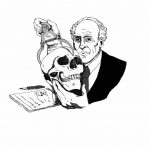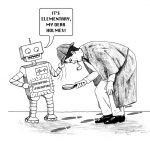This page provides references and capsule descriptions of my articles in branches of mathematics other than number theory, geometry and topology, and applied mathematics.
Graph Theory Uncovers the Roots of Perfection, Science, 5 July 2002, 38.
Some graphs (or networks) are easier to “color” than others. Mathematicians now have a simple test for perfect graphs, a large class of graphs that are optimal for coloring problems. Claude Berge, who originally proposed this test and was one of the big names in graph theory, heard about the proof of his conjecture on his deathbed. (He died just before this article came out.)
Vital Statistics, New Scientist, 26 June 2004, 36-41.
The “hard sciences” of physics and astronomy seem like the last place where you would have to deal with the ambiguities of statistics. But physicists and astronomers are gradually (and sometimes reluctantly) learning from the “soft sciences” how to deal with the ambiguities in their data. Three case studies: the Higgs particle, dark matter, and neutrino oscillations.

Cryptologists Cook Up Some Hash for New “Bake-off.” Science, 14 March 2008, p. 1480.
NIST announces a competition to develop a new standard for “hash functions,” which are used in digital authentication of documents. I described one algorithm by Kristin Lauter of Microsoft Research, which uses expander graphs.
Communication Speed Nears Terminal Velocity. New Scientist, 9 July 2005.
All communications, whether you’re downloading files over the Internet or radioing instructions to a satellite, have to obey a fundamental speed limit known as the Shannon limit. Try to go faster and your data will be garbled. Engineers have now developed not one but two codes that allow communication speeds within an eyelash of the Shannon limit.
The Code War. Beyond Discovery, National Academy of Sciences.
With the arrival of the Internet and electronic commerce, codes are no longer the exclusive province of spies and generals: They are part of our everyday life. Today’s hardest-to-crack codes are based on the mathematics of number theory. Tomorrow’s may exploit the quantum structure of the universe.





